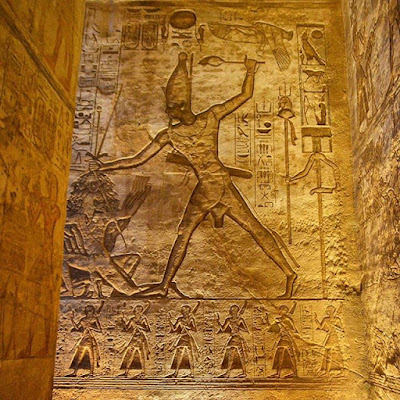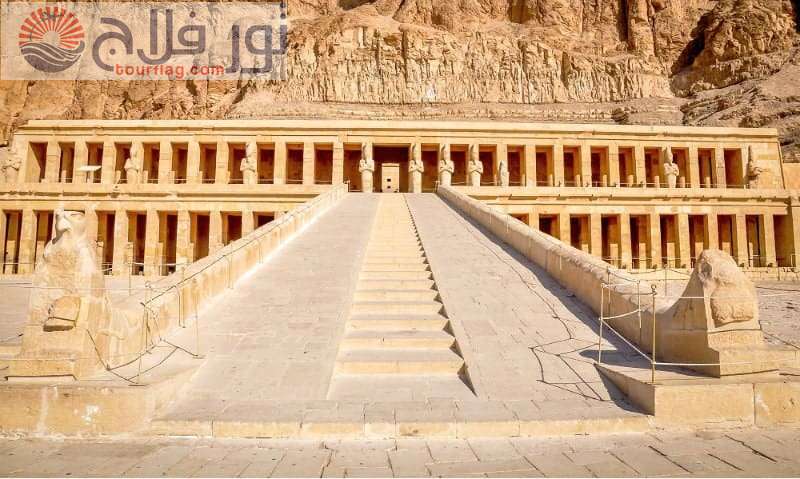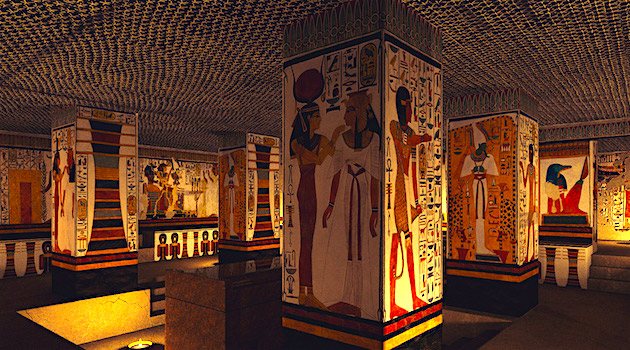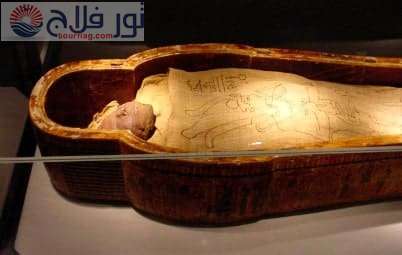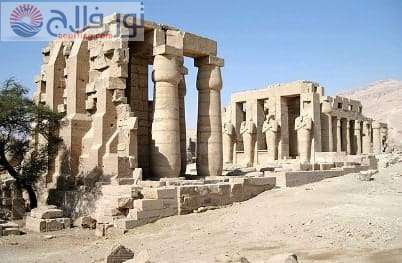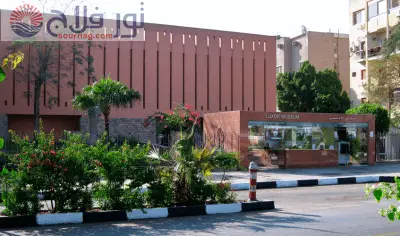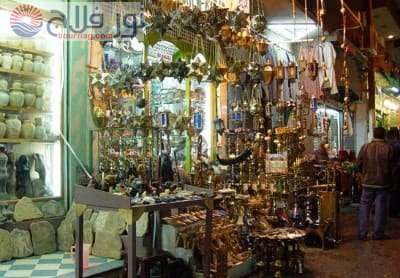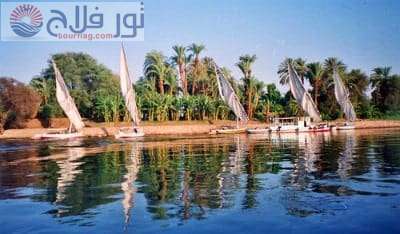Luxor, the "City of Civilization", or the "Open Temple" is one of the most important tourist cities in Egypt. It is as old as history itself. Wherever you go in Luxor, you will find a wonderful formulation of a great civilization, which is "Thebes", the capital of the ancient Pharaonic state, and the most important pharaonic temples and monuments.
Luxor not only attracts culture and history amateurs to its immense cultural heritage, but at the same time offers tourists many surprises, most notably the enjoyable Nile River trips in the Nile that divide them into two parts, and enjoy the most beautiful scenic, in addition to the flying balloon trips that give you The most beautiful views of the city are from the top, and we don't forget, of course, taxi rides, the most popular means of transportation in Luxor, and above all the mild climate in the winter, which made Luxor an unparalleled global winter.
Valley of the Kings always puts tourists at the top of the list of the most important tourist attractions in Luxor and Egypt in general, when you go there you will realize why this historic place arrives in the thousands every day.
Valley of the Kings in Luxor, is a site that includes the most important royal tombs and some important people from the entourage of the ruling families of Pharaonic Egypt.
The Valley of the Kings contains about 64 tombs, the most important of which is the tomb of King Tutankhamun. It is worth noting that the Valley of the Kings is classified as one of the UNESCO World Heritage sites, because it contains the pharaohs tombs with mural inscriptions are the most wonderful of all. This site is said to have been chosen for burial because of its proximity to the Pharaonic temples.
Valley of the Kings is a vast small town cut from rocks in the desert, and was built to serve as a burial ground for Egyptian pharaohs in the New Kingdom. About 500 years ago, between 1150 BC. In 1070 BC, this site was used as a place close to famous Egyptian rulers such as Hatshepsut, and a few Pharaohs in the Ramses and Tutankhamun line. The journey to the Kings of Kings is a long and hot journey and the tombs are often open to the public on a rotating basis so that others can be restored, because centuries of floods, weather and burglary have severely affected them. But visiting the Valley of the Kings is impressive, and walking along these dark and ancient lanes is not to be missed.
Mortuary Temple of Hatshepsut
The Deir el-Bahari Temple or the Hatshepsut Temple deserves the title of the Luxor Temple, the largest and most important funerary temple of the Pharaonic era. Tourists come from all over the world to enjoy watching the grandeur of its unique architecture.
The temple was erected beneath a cliff in the Deir el-Bahari area, which is one of the most important archaeological areas in Luxor located on the west bank of the Nile, and the goal of its construction was the worship of the god Amun, the sun god. The temple consists of two parts, the outer part for the living, and the inner part for the dead.
The monastery of Deir el-Bahari was designed on 3 levels, with open terraces, and built entirely of limestone, in front of the second floor, there are several wonderful statues of Queen Hatshepsut and the god Osiris. The temple is also distinguished by its historical inscriptions scattered on its walls, which still retain their colors despite the passage of thousands of years.
Mortuary Temple of Amenhotep III
The funerary temple of Amenhotep III is called the "Temple of Millions of Years", and it is located in the area of Kom El Hetan, on the western mainland in Luxor, or what is called the "City of the Dead".
King Amenhotep the Third, who is believed to have ruled Egypt for more than 37 years, erected it on a large area of 385 thousand square meters, but it was badly damaged for its low location. Memnon, many excavations and excavations are under way to explore the treasures of this huge funerary temple.
Valley of the Queens
The Valley of the Queens is located in the far south of the West mainland, it was built in the same architectural style of the Valley of the Kings, and for the same goal, which is to bury the women of the royal families, princes, princesses and their close associates of the noble class, and is located near the Valley of the Kings.
The most famous tomb in the Valley of the Queens is the tomb of Queen Nefertari, the beloved wife of Ramses II, the beautiful beautiful woman whose husband made her the most beautiful cemetery in fulfillment of her. All the walls of the tomb are decorated with reliefs and murals of unmatched beauty, representing the Queen, and she is receiving guidance and guidance from the gods.
Like the Valley of the Kings, the Valley of the Queens is located in a desert valley and contains about 90 known graves belonging to the queens in the New Kingdom, as well as rulers and officials of high social or political status. These people were buried here since 1550 BC and after centuries of use, the area also began to be used for religious cemeteries. Like many of the treasures of Egypt, but many of these tombs, such as the tomb of Queen Nefertari, are known to be some of the most beautiful examples of Egyptian tombs found so far.
Karnak Temple


Karnak Temple is a complex of 11 temples, dating back more than 4,500 years, to be the oldest known place of worship in history, so Karnak Temple is one of the most important monuments in Egypt and the most famous in the world.
The construction of the Karnak Temple continued for about 2000 years, on a total area of about 46 acres, to worship the god "Amon Ra", his wife "Mut" and their son "Khonsu". The Karnak Temple started from inside the Holy of Holies, then outward, where the lobby of the largest columns in the world, which contains 134 columns, then the entrance to the temple, which is the famous road of rams.
One of the most beautiful activities in Karnak Temple, which is one of the most important features of Luxor, is the audio and light shows that are held at night, which tells its story in more than one language.
Karnak is the largest temple area still present today. This spectacular extension of the temple, located in East Tips, is home to the stadiums, columns, and shrines of many good deities such as Amun, Mut, Khonsu, Montu, and famous pharaohs such as Ramses III. Karnak temples form a wonderful maze of structures, ranging from columns in the form of a huge collection of papyrus to motifs and comfort depicting dedication and cultural activities. This provides a wonderful insight into the culture of Theban. Over the centuries, excavated archaeologists have excavated hundreds of statues and thousands of bronze and many artifacts from this period.
medinet habu(temple)

medinet habu is one of the most beautiful archaeological sites in Luxor, which was built by King Ramses III to establish funerary rituals and worship of the god Amun. The secret of distinguishing Habu from Luxor is its unique architectural style, similar to the architectural style of temples in ancient Syria, which the king saw during his wars there.
medinet habu has been built on an area of 10 acres, and its walls and roofs are still preserved in color despite its construction date dating back to 3200 BC. There are the most important tourist attractions in Luxor, the most prominent of which is the Temple of Habu, one of the largest fortified temples of the ancient state, where there are two walls, one interior and the other outside, and a hall for celebrations, and the place designated for priests, called the Holy of Holies.
Luxor Temple is one of the most prominent temples of the East Bank, and it is located near the Karnak Temple. Its construction dates back to the Middle Kingdom, by order of King Amenhotep III, to serve as a home for the god Amon Ra.Luxor Temple is characterized by its huge facilities, which start from its large gate and the statue of Ramses II sitting on both sides of the entrance, and two obelisks, one of which sits in its place, and the other in the French capital Paris since 1836 AD.
Then there is a huge pylon of Ramses II with a width of 65 meters, then we will find a huge corridor consisting of two rows of wonderful cool columns, and many distinct monuments and rooms.
The Luxor Temple is historically known for its so-called "birth room", which was a major reason for building the Luxor Temple itself, until King Amenhotep asserted his legitimacy in ruling by proving his lineage to the god Amon.
Colossi of Memnon

On the other side of the Nile River from Luxor is the Colossi of Memnon, two huge stone statues representing Pharaoh Amenhotep III, an ancient Egyptian ruler around 1400 BC. They are almost all of the remains of the temple they had previously defended, and that was the largest and most wasted of all of Egypt at that time. About two thousand years ago, an earthquake and a statue were destroyed. When the dew forms in cracks and dries up in the scorching morning sun, the statue makes a strange sound and melody that makes the first guests of Greece and Rome call the statue the "Memnon" the legendary hero of the Trojan War.
Ideal of Memnon is one of the most famous monuments of Luxor, located on the road leading to the tombs of the Valley of the Kings, and they are what remained of an ancient temple built to commemorate the memory of King "Amenhotep III", one of the kings of the family of 18, which is considered one of the most powerful families that ruled ancient Egypt.
The Memnon statue is one of the most prominent tourist attractions in Luxor, which tourists are keen to stand at, and contemplate the greatness of ancient Egyptian history. They are called “Memnon Giants”, where the height of one statue is about 21.90 m. The name “Memnon” was called in the era of the Greeks; One of the statues; the air was passing through those cracks, making a voice like a whining, it was said that the whining or hero of the “Memnon” who was killed by “Achilles” during the Trojan wars was said.
The Mummification Museum is one of the most prominent tourist destinations in Luxor, north of Luxor Temple, on the Nile Corniche. The goal of the Egyptian state through the establishment of the Mummification Museum in Luxor was to highlight the techniques of the art of Pharaonic embalming that stunned the entire world, as the ancient Egyptian applied them to many creatures, and not only humans.
Thousands of tourists flock to visit the embalming museum annually, which made it one of the most important tourist attractions in Luxor, where it displays many royal mummies, and a number of stuffed animals, as well as a set of embalming tools used in the past, and there is also in the museum a model of a funerary boat to transport the body of the deceased Across the Nile to the mainland
The mother of Egypt was a funeral procession where the members of the deceased were removed and a corpse wrapped in lengths of linen fabric. This process was performed to facilitate the ancient Egyptians in the old way of the afterlife, but it was also her
The Temple of Horus was built in Edfu, on the west bank of the Nile River, to worship the idol "Horus", and its historical significance goes back to being the only temple that preserved its condition, as it took about a century to build, as a result of wars and seditions.
The Temple of Horus in Edfu consists of a large edifice with two towers, then a large courtyard, surrounded by columns on 3 sides, then we reach a hall with columns with heads in the shape of a lotus flower, to reach an area where the light dims a little, then finally we reach the last point of the temple , Which is the most holy place. The most prominent feature of the Temple of Horus is the Nile Scale, the birthplace of the deity, and it is a small temple similar to Greek temples.
Temple of Ramsium
The funerary temple of Ramsim is located in the Western mainland, and King Ramses II built it, confirming its great royal position and commemorating it.
King Ramses II was fond of building temples in Luxor and Nubia, but the most important of them was the Temple of Ramsium, because it contains huge statues of King Ramses II, pictures, and reliefs on the walls of the temple, which tell the nature of life during that historical era, and the most famous of which are inscriptions planning the battle of Kadesh The famous and its details that were between King Ramses II and the Hittites, and ended with the victory of King Ramses II.
Khnum Temple is located in Esna, south of Luxor, and is the only remaining temple of 4 temples that were present in Esna. The temple dates back to the Middle Kingdom, where it was built on the ruins of an ancient temple. Its construction and decoration work continued on separate periods, over 400 years.
The distinction of the temple of Khnum in Esna is the motifs and inscriptions preserved in its condition, as well as the hall of the columns in it, which is considered the most beautiful among its counterparts in Egypt in general; for the distinctive way of carving the crowns of its columns, the proportions are similar, and its condition is well preserved.
Deir El-Medina

Deir el-Medina may be the name strange to your ears, because this historic place, which has a privileged location between the Valley of Kings and Queens, did not take the same fame as these two sites, but what you do not know is that without this place, “Deir el-Medina” would not have found these royal tombs nor Pharaonic temples from the ground up.
Deir el-Medina is an integrated residential complex, pharaonic houses and ornate cemeteries; it was established for workers who created and established the ancient Egyptian city of Luxor, so the discovery of the city's monastery led to documenting the lives of workers in the Pharaonic era, who were of the poor classes, and reached a number of about 5 thousand people.
The temples of Abydos are located about 162 km north of Luxor within an archaeological area, and until the last century the area was buried under the sand, and that could be the reason for keeping it in good condition until now. The temples of Abydos consist of several monumental buildings, the most prominent of which are the Temple of King Seti I, the Temple of Ramses II, and the Temple of the Osirites.
The temples of Abydos are a pharaonic architectural masterpiece whose beauty is incomparable. Its walls contain many inscriptions from different historical periods, varying between relief and relief on the walls of the temples in the temples, the myth of Isis and Osiris, as well as the list of kings engraved on the walls of one of Abidos' great temples.
Temple of Hathor at Dendera
The Temple of Hathor at Dandara is a complex of temples to worship the god Hathor, a symbol of heaven and fertility among the ancient Egyptians. The temple is located about 2.5 km southeast of Dandara, Qena Governorate.
Hathor Temple is one of the most important complexes of preserved temples in Egypt, surrounded by a huge wall of mud bricks. The importance of the temple is due to the presence of many important ancient monuments in it, the most prominent of which is the main structure of the temple of Hathor, the temple of the birth of Isis, the holy lake, and other monuments dating back to the Roman era as well.
Tombs of the Nobles

The tombs of the nobles date back to the Middle Kingdom and the modern state, and they are the second most beautiful pharaonic tombs, after the tombs in the Valley of Kings and Queens. The nobles here mean the senior statesmen, after the kings who were restricted to eternity in the ancient Pharaonic state.
However, during the following historical periods, they were granted the legal right to immortality, and their tombs were decorated with reliefs, such as the tombs of the Kings, to result in thousands of wonderful noble tombs, but only 19 of them are available for visiting, which vary in terms of architecture, colors and quality of drawings; Make it one of the most enjoyable tourist destinations in the Pharaonic Luxor.
Mortuary Temple of Seti 1

The funerary temple of Seti I is located in the Qurna area on the western mainland, and it is also called the "Great Temple of Abydos", and the purpose of establishing this temple was to glorify and worship all the great Egyptian gods among its walls, but the first Pharaoh Seti was unable to complete it, and who did this was his son the king Ramses II, in addition to building his own funerary temple, which is located in close proximity to the funerary temple of Seti I which was designed in the form of an L-shaped, and has its walls with an exceptional character, some of which retain their original colors.
Luxor Museum
It contains more than 376 rare artifacts and mummies of the most important kings of ancient Egypt. The museum is located on the Corniche Road, and is one of the most important tourist places in Egypt to learn about the Pharaonic history.
The Luxor Museum consists of two floors: the first floor contains many very important artifacts, most notably the granite head of the statue of Amenhotep III, the head of the goddess Hathor that is in the shape of a cow, and the statue of the god Amun, and the crank, while the upper floor contains a hall with many important statues , A hall for mummies, a hall for cutting jewelry, utensils, some furniture, and amulets.
Luxor Corniche is one of the most important entertainment venues in beautiful Luxor. The Corniche extends over 2000 AD, starting from the Iberotel Hotel sign, to the north of Luxor. There is nothing more beautiful than a picnic with your loved ones with a cabriolet on the Corniche of Luxor, in addition to watching the banks of the river from it, and it is filled with boats, and ships that take tourists on Nile cruises, nor the most wonderful of that.
Just walking the Luxor Corniche at night amid its glowing lights is a pleasure in itself. If you are seriously considering traveling to Luxor, do not miss a stroll on Luxor Corniche, and enjoy the charm and beauty of Luxor, the global tourism capital.
Visiting Luxor markets is one of the most prominent tourism activities in the city, especially the Luxor tourist market, which visitors are keen to visit, as one of the most important tourism activities in Luxor.
The market is a similar version to the Khan Al-Khalili neighborhood in Cairo, where it is filled with tourist attractions, antique shops, antiques, crafts, handicrafts, papyri, and accessories of the Pharaonic character, in addition to perfumery stores and clothing stores of ancient Pharaonic style.
If you get bored of the historical places in Luxor, and want to go to a different and enjoyable place amid the relaxing nature and greenery, immediately head to Banana Island, west of Luxor, which is a destination for tourists to enjoy the most beautiful scenery on the Nile, and take pictures of souvenirs.
Access to Banana Island in Luxor is through Nile cruise trips, where tourists are invited to visit them; to break the routine of ancient sites, and enjoy a different natural atmosphere that calls for rest and relaxation. Banana Island extends over an area of 5 acres, and is infested with banana trees, palm trees, and many fruit trees. It also has an old "waterwheel" to complete the distinctive agricultural condition of the island.
Howard Carter's home is the discoverer of Tutankhamun's tomb, where he has lived for 15 years, for more than 87 years. The Egyptian authorities decided to turn this house into a museum, in order to satisfy the curiosity of many to learn more information about this world, and to celebrate its outstanding contributions to Egyptology.
Howard Carter's home displays the most important tools the world was using in drilling and excavating, as well as a collection of photos of him during his work. But his most important accomplishment ever was the discovery of Tutankhamun's tomb in 1922 AD, the tomb that was the most preserved of its condition, between the Pharaonic tombs in the Valley of the Kings.


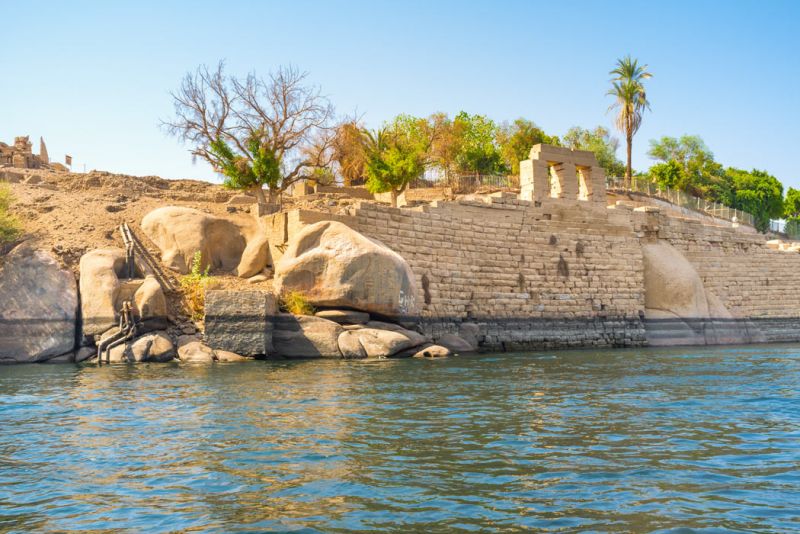






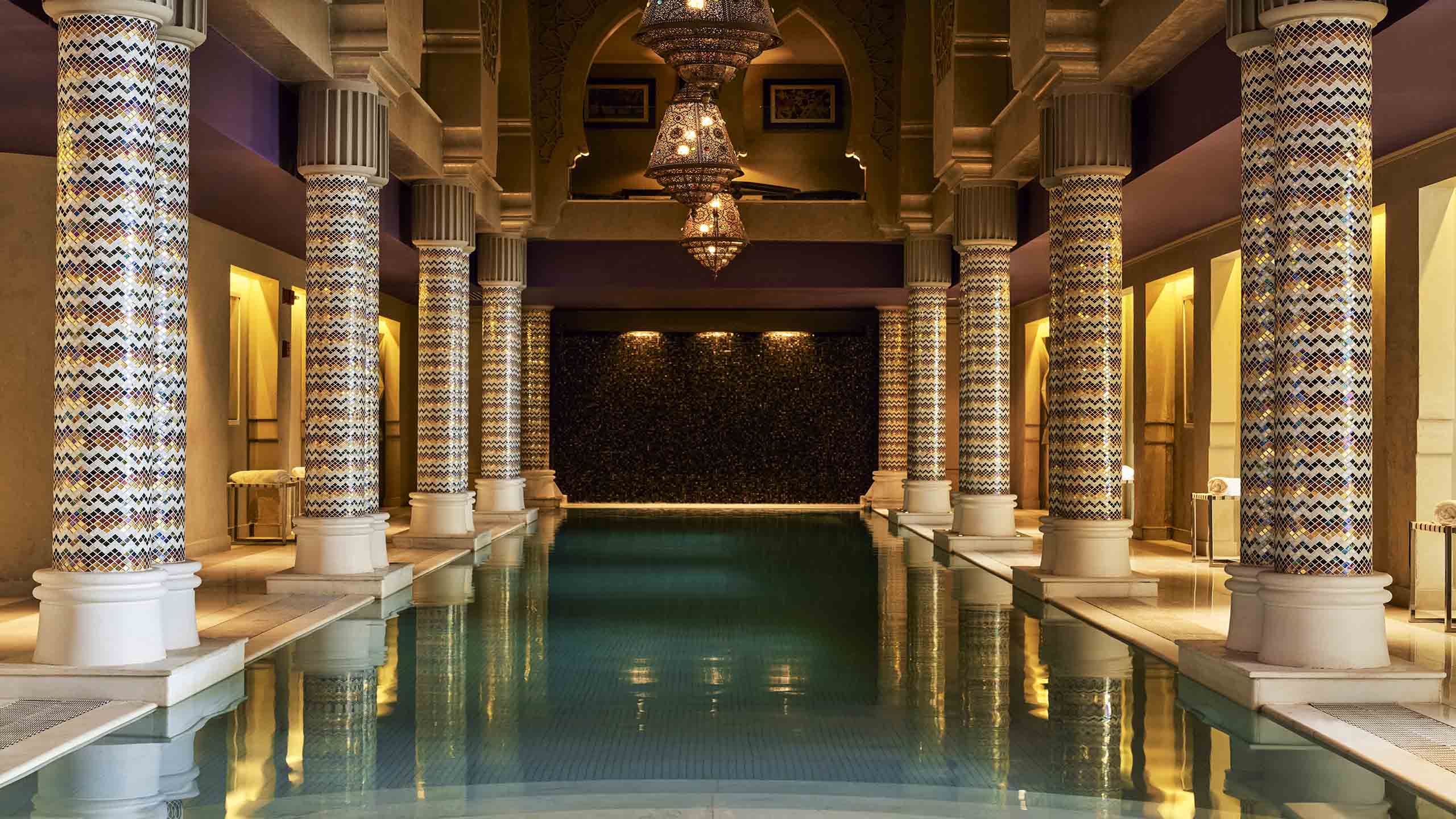



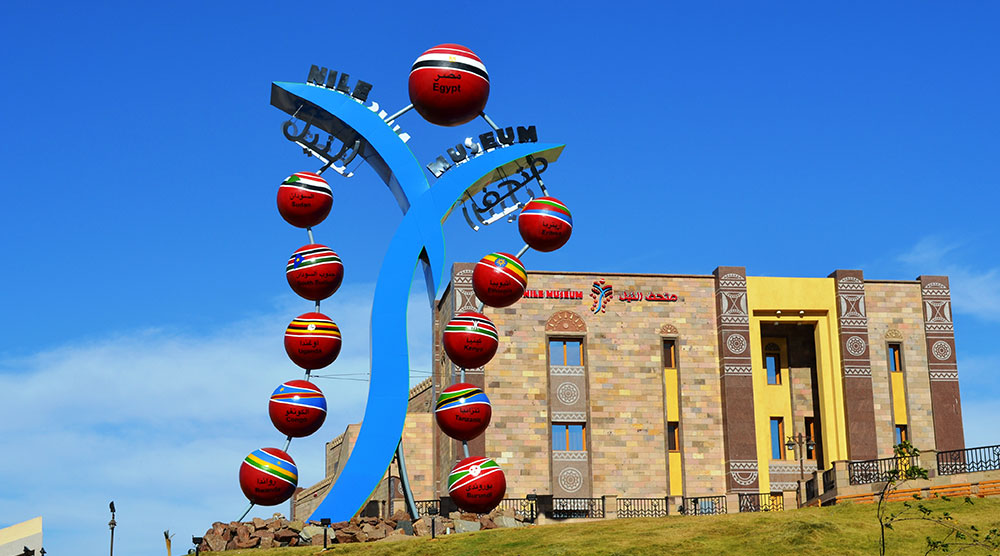
/GettyImages-157675568-5c3ee84246e0fb00016e5151.jpg)


























